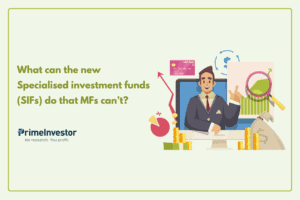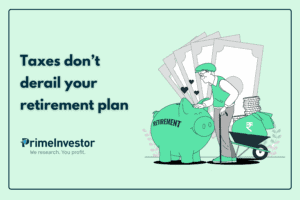A recent Supreme Court ruling about the Employees’ Pension Scheme has put personal finance writers in a tizzy. Most have tried to decipher the complicated ruling. Some have tried to tell eligible employees what they can still do to board the EPS bus if they’ve missed it so far.
But after studying the ruling and its implications, we felt you needn’t worry much about the EPS if you have missed the bus. There are many other good pension options. Here, we clarify the recent ruling, what the EPS is about, and what your other pension options are.

Q. I have heard of the EPF. What is the EPS or Employees’ Pension Scheme?
If you’re an employee in any fair-sized firm in India, you’re likely to be a member of the Employees Provident Fund organisation or EPFO. When any new employee joins an organization with more than 50 people, it is supposed to deduct 12% of the employee’s basic pay (including components such as DA) every month towards his or her retirement savings and deposit it in the EPF. The employer makes a matching contribution. Every year, the EPF declares a fixed interest for all its subscribers on their accumulated balances. The EPF is an extremely popular retirement savings option because of its high fixed returns, which enjoy tax breaks.
Most folks however don’t know that until 2014, enrollment in the EPF made them automatic members of the EPS or Employees’ Pension Scheme too. Out of your employer’s contribution, 8.33% went into the EPS kitty. These contributions were pooled to give member employees a guaranteed lifelong pension after retirement. This is in addition to the lumpsum they accumulated under the EPF.
Q. What is the Supreme Court case that recently made headlines about the Employees’ Pension Scheme?
In 2014, the Indian government brought in amendments to the Employees’ Pension Scheme, changing four features.
- One, it said that the EPS contribution of 8.33% would be calculated on a maximum salary of Rs. 15,000 per month. Until then, the maximum salary was set at Rs 6,500. But employees, if their employers agreed, could set up higher contributions based on their actual pay and earn a higher pension if they wished. With the amendment, the maximum contribution that an employer could make to an employee’s EPS was capped at 8.33% of the employee’s pay or 8.33% of Rs 15,000, whichever was lower. This pegged the maximum employer contribution to EPS at Rs. 1,250 a month.
- Two, the amendment said that employees who joined EPF after September 1, 2014 and earned more than Rs. 15,000 a month (in basic pay plus DA) would not be eligible to join the EPS at all. The entire 12% contribution by employers in such cases would remain in EPF and they would not get any assured pension after retirement.
- Three, it said that employees who had joined EPF before September 1, 2014 and earned more than Rs. 15,000 would get a one-time option to join EPS at their actual pay, provided they decided within six months. If they opted to join, they would have to contribute an additional 1.16% of their salary exceeding Rs. 15,000. To make up for the shortfall in past contributions (which would have been capped at 8.33% of Rs. 6,500), their employer’s payments into EPF would be diverted to EPS.
- Four, the final monthly pension payable to the employee would be calculated based on the average of 60 months pay before retirement, not 12 months as specified earlier. This had the effect of lowering the pay on which pension was calculated.
Essentially, the government was trying its best to restrict the outgo towards EPS for higher income earners because it wasn’t sure if a fixed pension scheme with guaranteed returns would be sustainable for the crores of EPF subscribers in the long run.
Employees and trade unions filed cases to nullify all these amendments in the Kerala, Rajasthan and Delhi High Courts. The Kerala High Court struck down these changes and directed that the scheme continue as before. But the Central government and the EPFO challenged the Kerala High Court judgement at the Supreme Court. After prolonged hearings, the Supreme Court bench which finally heard this case has upheld the amendment last week and ruled in the Government’s favour.
Q. What does the Supreme Court ruling imply for me?
The Supreme Court has broadly upheld the amendments, but granted some concessions to employees wishing to join EPS.
- One, if you are a member of the EPF who has joined after September 1, 2014 and are earning more than Rs. 15,000 a month (basic pay plus components), then you are not eligible for EPS. Your entire employer’s contribution of 12% will remain in the EPF and you will not get a pension.
- Two, if you have been a member of EPF from before September 1 2014, earn over Rs. 15,000 and want to join the EPS, the SC has given you a four-month window to join at your full salary. However, this needs the consent of your employer, with his past contributions to EPF to be diverted to EPS. The SC ruling lacks clarity on whether an additional 1.16% contribution from you will be levied. Though the SC has held such payouts as beyond the scope of the EPF Act, it has kept this part of its ruling in abeyance for six months. Employees who retired before this date, cannot join now.
- Three, if you are member of EPF and do not earn over Rs. 15,000 a month, you are an automatic member of EPS. But your employer’s contributions will be calculated based on the pay cap of Rs. 15,000. Your pensionable salary will be calculated based on the amended formula based on 60 months average pay at the time of quitting and not 12 months.
If you’re of a legal bent of mind, you can read a more technical explanation here.
Q. What if I have been working from before September 1 2014 and am eligible for the Employees' Pension Scheme? How should I join it?
The EPFO is expected to come out with detailed guidelines on this and you should wait for them. But the ruling suggests that you need to meet two conditions before joining. As it is your employer who needs to make the 8.33% contribution to EPS and divert his past EPF payouts to it, your employer will need to agree on your enrolling in the scheme and you will need to submit a joint application to be considered by the EPFO.
Do note that pension payouts under EPS are only available to employees who have put in a minimum 10 years of service with organisations that offer EPF. If you choose to quit without completing 10 years of service, you are not eligible to receive any pension. When you switch jobs and transfer your EPF account from one organisation to another, your old organisation is expected to provide a Scheme Certificate detailing your length of service, pay, non-contributing period etc. to the EPFO, which is necessary to claim EPS at retirement. So, you really need to evaluate if the pension you’ll get under this scheme will be worth all this trouble.
At retirement, the EPS calculates the monthly pension payable to you based on this formula: (Pensionable salary x pensionable service)/70. Pensionable salary is your average salary in the 60-month runup to retirement. Pensionable service is your actual service with organisations that offer EPF, subject to a 35-year cap.
Q. What pension will I get if I subscribe?
Unlike the EPF which declares a transparent return every year to its subscribers, EPS pays out a guaranteed pension to its subscribers based on a government-decided formula. There is no correlation between your contributions to the scheme and your final payouts.
At retirement, the EPS is supposed to calculate the monthly pension payable to you based on the formula: (Pensionable salary x pensionable service)/70. Pensionable salary is your average salary in the 60 month run-up to retirement. Pensionable service is your actual service with organisations that offer EPF, subject to a 35 year cap.
Now, if you joined after September 1 2014, your pensionable salary will be limited to Rs 15,000. Therefore, this formula implies that the maximum pension that an employee who worked for the full 35 years can get from the scheme is Rs. 7,500 per month, no great sum.
But most retirees say that their actual pension doesn’t match these calculations and is much lower. You can use this online calculator provided by EPFO to calculate your likely pension based on pay and experience.
If you joined before September 1, 2014 and now take up the option to join the scheme within 4 months (based on the rules that EPFO notifies) then you may be eligible for a much higher pension, based on your average salary in the 5 years prior to retirement. But as your employer’s past contributions towards EPF will be moved to EPS to some extent, you should brace for a lower EPF pay out at retirement.
Q. So are you saying that missing out on the EPS is not such a big deal?
Yes, exactly. There is no one-to-one correlation between the contributions you make to the scheme and the final pension you get. Moreover, while the EPF’s investments are governed by specific prudential norms and its audited accounts and annual interest decisions are put before a Central Board of Trustees, the EPS is a black box about which not much is known.
EPS does not maintain individual subscriber accounts and simply pays pension out of a pool. It is not even clear if the EPS, like other regulated pension funds, conducts periodic actuarial evaluations to assess if it can meet its guaranteed payouts to employees based on its inflows and returns. The government’s desperate attempts to rein in the fund’s liabilities suggest that it is not very comfortably placed on this score.
Therefore, instead of diverting 8.33% of your employer’s contributions towards EPS, if the contributions go into EPF, you can at least be sure that the sum will accumulate in your account and earn the tax-free interest that the EPFO declares every year. The EPFO’s interest declarations tends to be above market rates and are guaranteed. You can decide how to flexibly deploy your EPF corpus or allocate it across assets at retirement. You can check the historical EPFO interest rates here.
Q. Forget EPS. What else can I do to get a pension after retirement?
There are a huge number of ways to secure a fixed cash flow post retirement.
#1 Pension plans
You can invest the proceeds of the NPS, EPF or any other corpus you have accumulated in an immediate annuity plan provided by an insurer. Such plans offer you guaranteed lifelong income at a fixed level, albeit at a low IRR. You can find our take on this class of investments here: https://www.primeinvestor.in/varsity/immediate-annuity-plans-dont-deserve-the-hate/ .
If tax inefficiency of these plans is a put-off, there are guaranteed insurance cum income schemes offered by insurers such as HDFC Sanchay Plus. We covered this here: https://www.primeinvestor.in/prime-review-hdfc-life-sanchay-plus/.
#2 Government guaranteed schemes
If you prefer government schemes with good returns, we discussed some options in this article though the returns may now be higher. You can also invest in GOI Floating Rate Savings Bonds or even better, g-secs and SDLs on which we regularly issue recommendations as part of Prime Bonds (available for PrimeInvestor Growth subscribers)
#3 The mutual fund route for tax efficiency
One class of investments that score on returns, tax efficiency and anytime liquidity are mutual funds. Debt funds can double up as post-retirement vehicles where you can use Systematic Withdrawal Plans to set up a regular income stream very tax-efficiently. This article tells you all you need to know about using MFs for regular income and growth post-retirement.
Please note that debt fund taxation has undergone a change. Indexation benefit will not be available for investments made from April 1, 2023 onwards. You can read about this in our article, ‘Tax changes in mutual funds: How to manage your investments now‘.
- You can check our retiree portfolios based on your tax slab - https://www.primeinvestor.in/portfolio-life-situation/
- Or if you are not a retiree but need some income and growth, you can check our income and growth portfolios https://www.primeinvestor.in/portfolios-need-based/
- If you are still building a retirement portfolio now, then consider a portfolio based on your time frame, from our time-frame based portfolios.
- If you want to choose your own funds to build a retirement portfolio in lieu of contributions to EPS, check our mutual fund recommendations - Prime Funds.








21 thoughts on “Employees’ Pension Scheme and the SC verdict – Your questions answered”
Hello,
Let me acknowledge at onset, your articles are informative and actionable.
Please shed light on below
1) If you become and OCI (Overseas Citizen of India) can we continue holding accumulation in EPF Account, there won’t be any further contributions? happy to declare the interest annual pay tax for the same, assuming interest would still be paid after change in the citizenship.
2) Do OCI qualify for Pension (EPS)?
Thanks
From our understanding, yes you can. EPS eligibility will depend on your joining date as per the article and your past contributions to the scheme
Comments are closed.